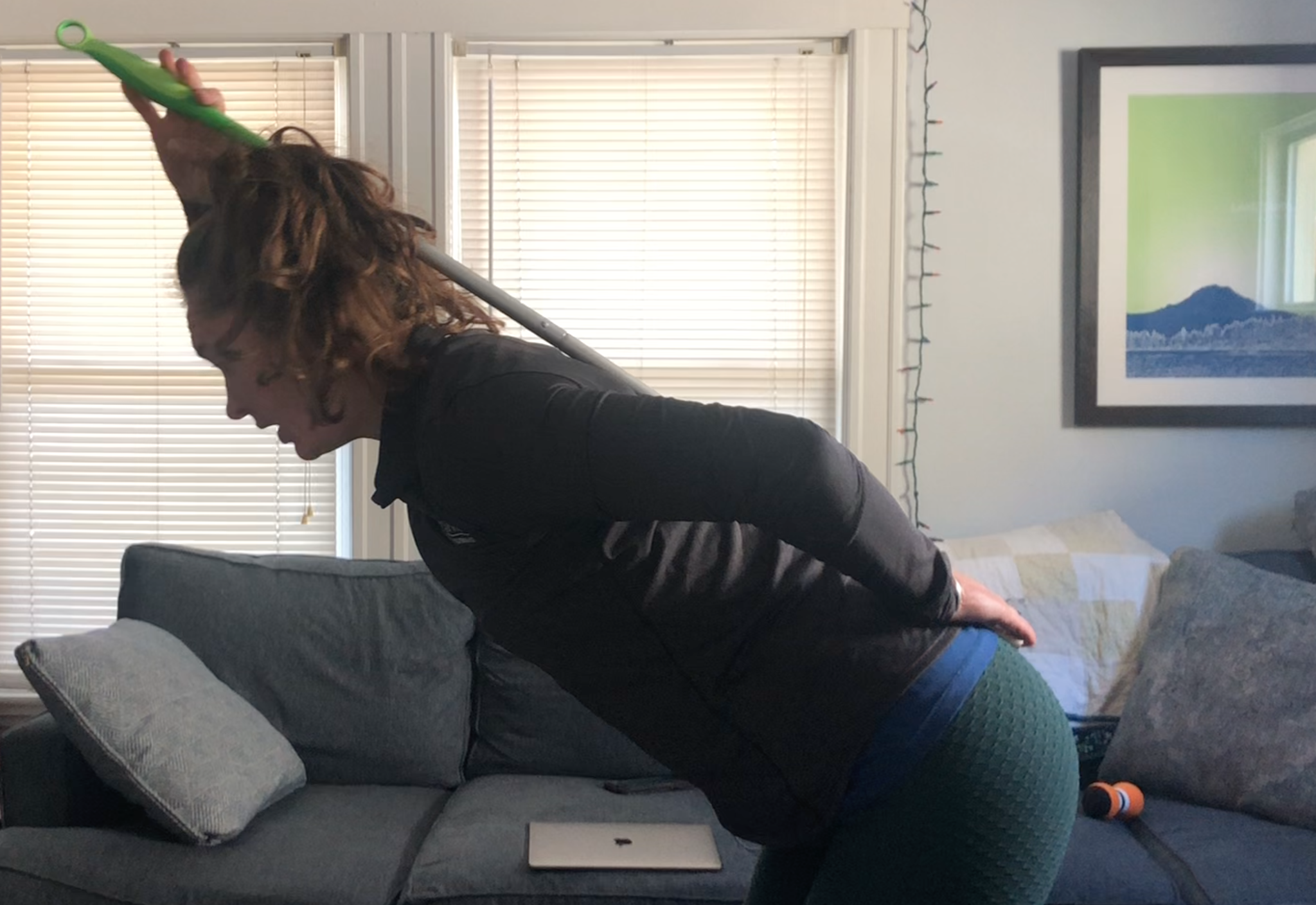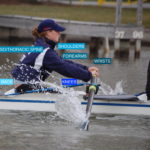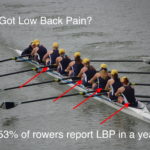What is a hinge pattern?
The hinge movement pattern I would argue is the most important full-body pattern to be very good at if you are a rower! The ability to flex through your hips while maintaining strength and integrity through your core, spine, and legs is what we do for bodies over through the catch. I would argue we even hold a hinge position isometrically for the first part of the drive. Rowers need to know how to hinge well!!!
When does a rower hinge?
- EVERY SINGLE ROWING STROKE!!!
- Equipment Management:
- Getting your boat in and out of the water
- Getting your boat in and out of low racks
- Lifting:
- Deadlift
- Kettle Bell Swing
- Glute bridges
- Bent over row
Common Injuries from an Inefficient Hinge:
If your hinge pattern is difficult, if you fatigue as you row and start to lose I or if some mobility restrictions are preventing you from doing it well, you are putting yourself at risk for injury. Being unable to hinge well or losing the pattern as you fatigue can be at the root cause of low back pain, hip pain or knee pain to name a few. If the hinge pattern is not strong and fluid, you might: overuse your spine, open your knees and hips too much to get to the catch, or even overreach with your shoulders or cause other compensations. The ideal way for your body to transition from the finish up the recovery is through a hinge!
Without the ability to get your trunk and pelvis to transition together, the force of your leg press and body opening to transfer the power from the foot stretcher to the handle will get offloaded elsewhere along the chain. If you might arrive at bodies forward with flexion or rounding through your spine rather than your pelvis, this could be a cause of some low back pain or even mid-back or rib pain. If you open your hips to get to the catch because of difficulty getting your torso and pelvis forward, you could end up with hip or knee pain. If you have trouble with efficiently hinging, if your core gets tired and you start to collapse, you are putting your mid-back and shoulders at risk of injury. If your hinge pattern becomes inefficient as you fatigue, maintaining pace and connection with your boat will also be difficult. Changing how you get to body’s over or having an inefficient hinge, can cause you to rush your slide, change the set of the boat or cause you to compensate in other ways to try and stay connected with your boat mates.
How to work on it:
Having sufficient hip mobility, ankle mobility* and spine mobility are all important. Having good hamstring and calf flexibility definitely makes a difference! Using your glutes and core together will help support a healthy hinge pattern. That’s a lot of pieces of the chain that need to work together to help with a healthy rowings stroke. Here are a few ways to assess where you are and see what you might focus on:
Give this a try. It’s just as simple as a body’s over drill. From a chair or sitting on the floor, pivot from the back of your sit bones in a slight posterior pelvic tilt and controlled extension of your trunk to a slight anterior tilt and slight flexion of your trunk. This is generally what we are talking about. That pivotal pattern to a healthy rowing stroke.
Now give yourself a little feedback, standing using a dowel/broom/Swiffer handle, line the rod up with your spine, touching your sacrum, between your shoulders and your head. The goal is to bend at the hips while keeping all points in contact with the dowel/rod. Follow along with my YouTube videos for (shown above) to practice your hinge pattern. This is a perfect movement pattern to work on at home. It requires minimal equipment, you get feedback for yourself by feeling the dowel touch your head, shoulders and sacrum and you know you are doing something to improve your rowing stroke and possibly help you be more effective in the weight room too!
There are a lot of drills you can do based on where you might be having trouble hinging. Not everything is necessary for everyone and working too much on getting mobility through the back of your hip or spine without working on stability through the area as well could cause some other problems. If you feel like your hinge pattern could use some help and aren’t sure how I’m here to help! The best bet for everyone is trying a dowel along your spine just to get used to the proper pattern. If it remains challenging, or you feel you get stuck somewhere (ie once your hamstrings get too tight or you feel your calves get tight) doing some foam rolling and stretching are great ideas! If you get a pinching in your hip or other pain in the pattern, that’s a slightly different story. Getting a little guidance might help you make progress faster than just guessing on what exercises to try at home. Physical therapists/physios (like me!) love helping with this!!
Here are some great drills too use to improve your hinge from my colleagues at Champion Physical Therapy and Performance:
* Ankle Mobility- if you haven’t discovered it yet, @rowingstrength put together this fantastic resource all about the foot and ankle and rowing! Check it out! The Movement of Rowing: Self Screening Strategies and Solutions for the Ankle



